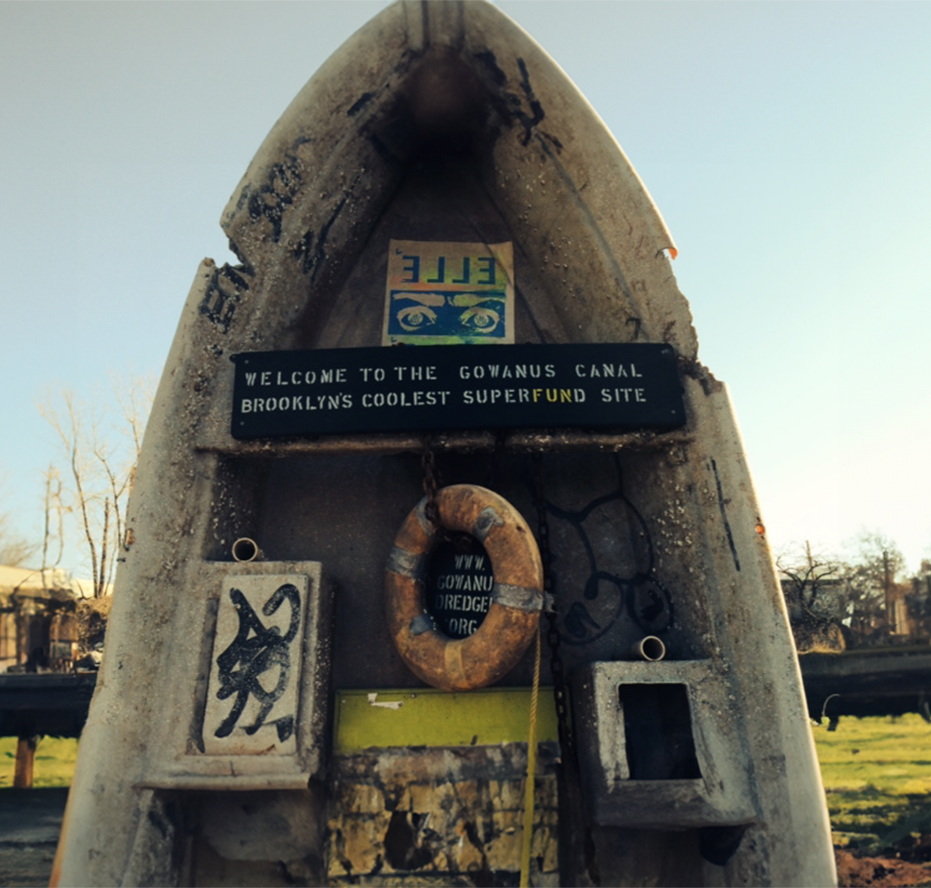
Evolutionary Geneticist Elizabeth Alter finds the animals living in polluted bodies of water fascinating.
Where do you go to swim or to see water?
Evolutionary Geneticist Elizabeth Alter loved to explore the water at the beach near her childhood home in Saudi Arabia:
I got a mask and flippers for a Christmas present one year…. The beach that we would go to had a shallow area and then this drop off — an area where all of a sudden it goes to black. With my mask and snorkel, I started going closer and closer to the edge. When I got a little bit older and got my scuba certification, I was able to go all the way to the bottom.
But what she found there, at the bottom of the drop off in that section of the Arabian Gulf, where Liz had imagined she’d find swarms of “giant squid, sharks, and who knows what” filling the water and ocean floor, surprised her. There was only a flat space, populated by just a few species clustered around a sunken tire. Perhaps thanks to oil pollution in that area of the gulf, “it was pretty much barren except for this one little stop with a mini ecosystem that was starting to flourish all around the tire.”

This experience and hunting for snakes and scorpions in the local desert ecosystems with her father, whose work for an oil company had brought Liz’s family to Saudi Arabia, got her thinking about marine (ocean) ecosystems, biodiversity (the mix of creatures that live in different areas) and environmental restoration.
Perhaps the tar she and her family had to wipe off with corn oil when visiting the Arabian Gulf beach seems minor compared to the pollution Alter and her colleagues find in the water they explore now. They use minnow traps and seine [“sayn”] nets to catch Fundulus heteroclitus, also known as mummichog or Atlantic killifish, in Brooklyn’s Gowanus Canal. The canal, a Superfund site, was thought to be “lifeless” until recently, due to the large amounts of chemical pollutants in it. Residents of Brooklyn who walk across bridges over the canal, especially on hot summer days, notice the strong chemical and sewage smells it gives off, thanks to gas and chemical plants, tanneries, and other industries that polluted the water in the past and also to storm water and sewage that runs into the Gowanus. It’s difficult to be near that water, let alone to swim in it. But mummichog and a few other creatures manage to live there.
How have these fish evolved to survive heavily polluted water? Alter and her colleagues investigate answers to this question by examining the guts of the fish they catch. The simple tube that makes up the mummichog’s digestive system contains an ecosystem of its own, which includes microscopic creatures that help the fish break down some of the hydrocarbons and other chemicals in their environment.
Alter’s team cuts the fish’s intestinal tube into pieces, adds tiny beads, and mixes it up at high speeds, creating a “little fish-gut milkshake.” Then they examine the DNA of the bacteria in the “milkshake,” identifying different species. “Does the fish gut harbor any particular species that we know are good at breaking down certain compounds?” “I’m hoping that these questions help us understand what biodiversity exists in New York in these polluted but recovering ecosystems” and how to make the city’s environment more friendly to different forms of life.
Alter and the people she works with use math in their lab. Students help with chemical titrations, which involve doing simple algebra and help determine how much of a particular chemical is dissolved in a quantity of liquid. “We need students who are detail-oriented, who know how to keep a lab notebook.”
To understand the rate at which DNA is changing within a species, Alter and other evolutionary geneticists make calculations similar to calculating “the speed of a car: measure the distance between genetic species” by comparing certain parts of their DNA and “use the fossil record” to estimate how much time it took for those distances to develop. Radiocarbon dating tells us that a certain species lived at a given time. “So we have a time point that we can calibrate against this genetic distance and use that to get a rate” at which a given change in the DNA occurred.
They use percents to analyze the genetic differences between species. How many mutations (changes) have occurred in a particular piece of DNA? For example, Alter compares a 100-base pair chunk of the nucleotide in two species. “If three base-pairs out of 100 are different between the two species, then we would calculate a genetic difference of 3%.”

As you can see from Alter’s work with the mummichogs of Brooklyn’s Gowanus Canal, the work of evolutionary geneticists and environmental scientists helps humans understand how other creatures break down chemicals. It may also help us develop our own ways of making pollutants in our water, soil, and air less dangerous. But despite the importance of this work, Alter has noticed that parents who encourage their children to go into science don’t always steer them in this direction.
“I see with my undergraduates: if you express any interest in biology, everyone wants you to be a medical doctor. [But] from the beginning, I was absolutely certain I did not want to be a physician….” Alter advises her students to pursue their passions: “if you’re passionate about research and making a difference and you’re pretty sure that you don’t like hospitals, [environmental science and evolutionary genetics are] a great career.”
And these fields are at “an important stage.” For instance, residents and managers of cities “are finally recognizing the need for having an ecologically healthy city, a city with functioning ecosystems.” Sandy, the powerful hurricane that damaged property in New York, where Alter works, New Jersey, and other states on the east coast of the U.S. forced people in the area to pay more attention to the health of their environment. ”I see the need for environmental scientists increasing fast, particularly in New York City but in all urban areas across the country.”


